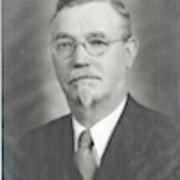Students watch the documentary, Who Built Our Capitol? and write answers to the thirty questions in the video review.

A shorter, 20-minute version of the documentary for classroom use is available above. Closed captioning availalbe by clicking cc button after play begins. The full-length 47-minute version is accessible via the home page or by clicking here.
Curriculum for middle school teachers was created during the summer of 2014.The five lesson plans meet Minnesota Social Studies Academic Standards and are complementary to the Northern Lights history textbook commonly used in Minnesota middle schools.
These plans were refined during pilot classes in several schools during the 2014-15 school year. We are still open to feedback or posting lesson plans or materials created by students in these classes. If you have feedback or something to add to the site, email Rany Croce at rcroce@umn.edu.
Among the Minnesota educators using the curriculum and video in classrooms have been teachers in Andover, Belle Plaine, Bloomington, Cannon Falls, Dawson-Boys, Eagan, Duluth, Owatonna and Rosemount schools.
Any teacher is welcome to use and adapt the curriculum posted here. If you would prefer to use a DVD copy of the documentary video, free copies are available for classroom use by contacting the Labor Education Service: les@umn.edu or (612) 624-5020.
LOG IN AND ACCOUNT CREATION
In order to see goals and other information specific to teachers, as well as answer keys to exercises, teachers need to log in (upper right of screen) and submit information to create an account. Please email Project Director Randy Croce at rcroce@umn.edu to let him know that you have registered so that your access can be approved. This will also expedite your access to educator resources. A large number of spam and fraudulent submissions sometimes make it difficult to distinguish and approve legitimate educator requests. Once the simple ID information is submitted, it may take a day or so for the account to be validated and to receive a confirmation email. If you do not receive a confirmation email in your inbox, check your spam filter. Teachers have discovered the confirmation email there. THE TEACHER MATERIALS ARE ACCESSED BY HOVERING OVER AND CLICKING THE TITLE OF EACH NUMBERED LESSON (e.g. 3. PHOTOGRAPH ANALYSIS). THE LESSON TITLE WILL CHANGE FROM BLUE TO RED AND THE TEACHER MATERIALS WILL BE VISIBLE AFTER THE LINK IS CLICKED.
Overview of the curriculum and instructions for five lesson plans can be found in the attachment below. The attachment includes goals and Minnesota Social Studies Academic Standards this curriculum meets.
Objectives for Curriculum: Students will identify the countries or regions from which Capitol builders immigrated and reasons they came to Minnesota. Students will analyze photographs, pointing out construction site dangers and ways to make the workplace safer, investigate and identify the specific jobs involved in the building of the Capitol, and generate a list of items they would have placed in the Capitol’s cornerstone.
NOTE: The overview is attached in two file formats, a fixed PDF and Word (docx) which allows users to make changes. With some browsers, the links to other websites and documents work in the Word document, but not in the PDF, while variations in browsers and versions of Word can cause pages to display differently.
| Attachment | Size |
|---|---|
| 869.64 KB | |
| 807.75 KB |
Students watch the documentary, Who Built Our Capitol? and write answers to the thirty questions in the video review.
Students will work with small cooperative groups (2-3) to research a worker involved in the construction of the Minnesota State Capitol building. They will utilize the "Who Built Our Capitol” web site to find the information and resources for the lesson. They access a Google map at https://mapsengine.google.com/map/edit?mid=zGCv4eqYm26A.k6Ucle3H8Va4 to get a visual sense of where their worker immigrated from, as well as where their worker lived in St. Paul. Students also examine why people left their home areas and came to Minnesota in the past and share their own personal family immigration stories.
Studying photographs can be like studying a short story. In this activity, students analyze photographs taken at the time the Minnesota Capitol was built, looking at stages of the construction itself, as well as images of quarries and railroads that supplied and delivered materials for the statehouse. Students are guided in their analysis by answering a series of questions. An additional exercise prompts students to view the photographs with safety in mind, pointing out construction site hazards and suggesting what could make the workplace less dangerous. This exercise can lead to discussion of efforts over time to make workplaces safer and to help workers and families when accidents do happen.
The cornerstone of the Minnesota State Capitol building was laid in 1898 by former Governor Alexander Ramsey. A copper box within the stone contains items that the people at that time thought were important to show future Minnesotans. Students get the chance to select items they would put in the cornerstone of this cherished building - if it was laid today - to give future generations a sense of the state as it is now. This activity provides an opportunity to compare late 1800s and present values, as well as variations in priorities among different contemporary classrooms and Minnesota schools.
This Jeopardy-style game informs students about the many skills and jobs required to construct a major building, like the State Capitol. Clues give activities associated with a particular job, and student answers supply the type of worker.